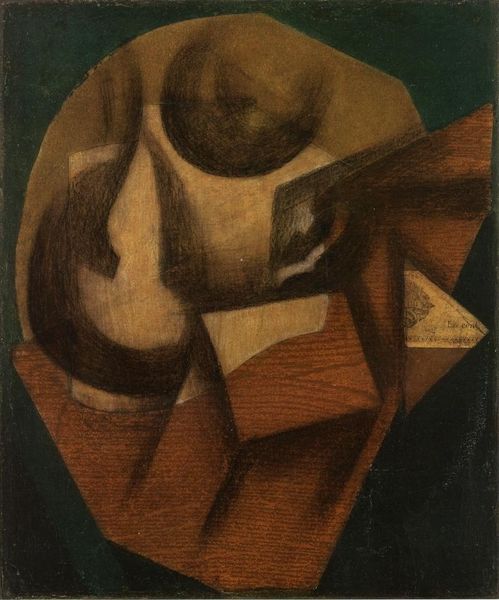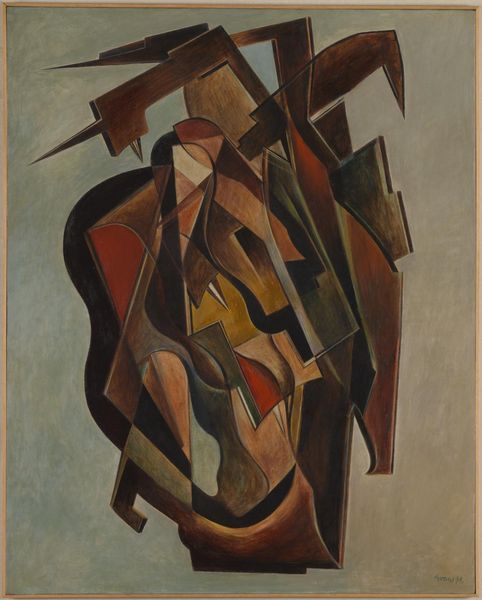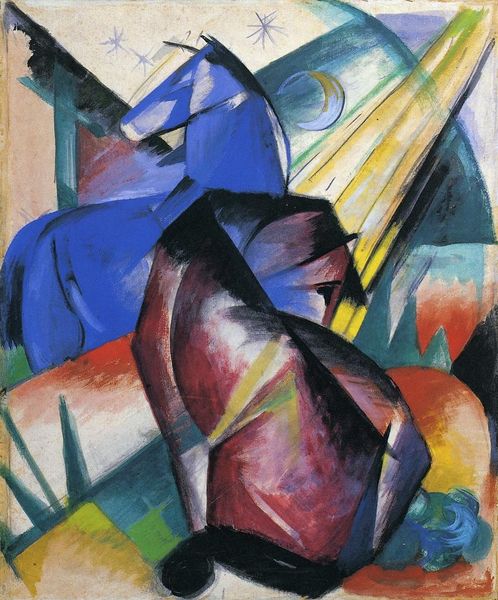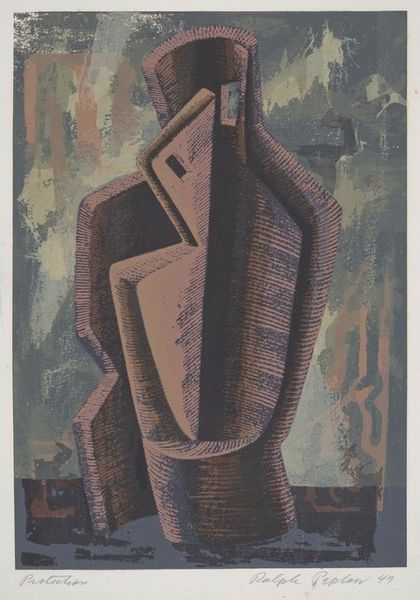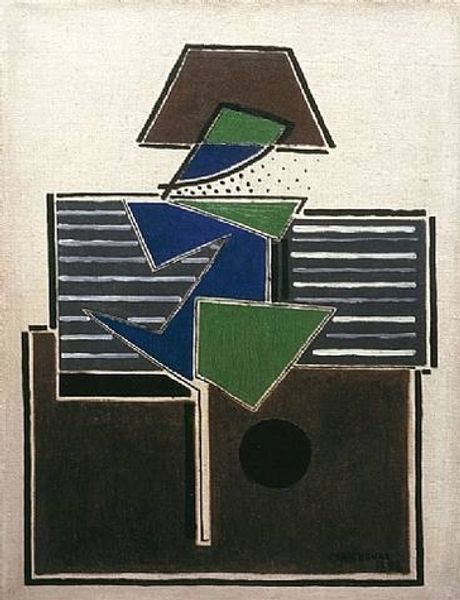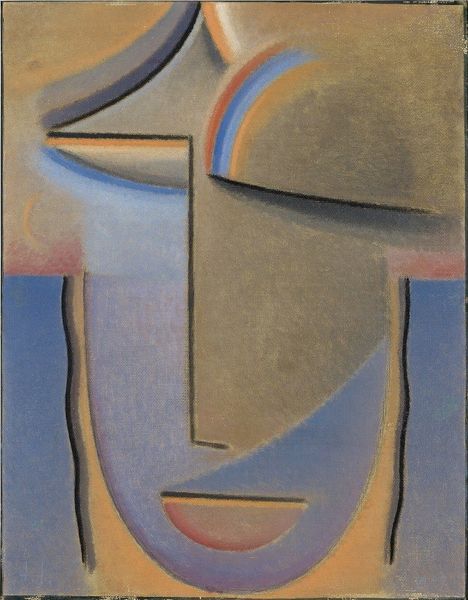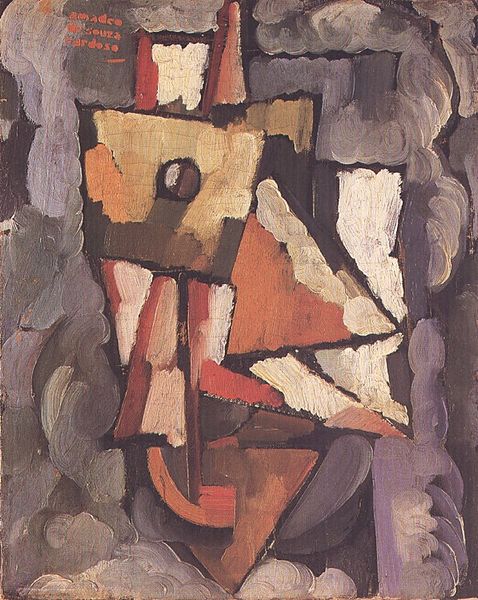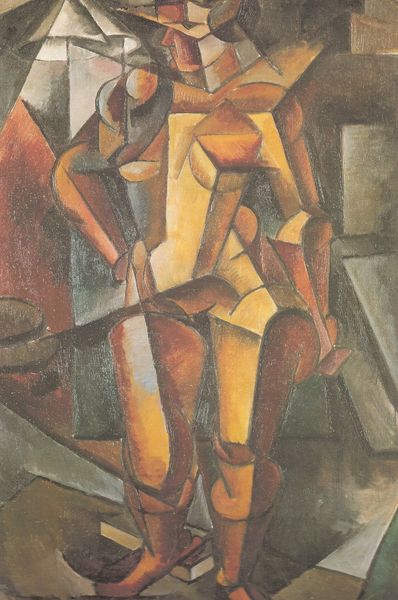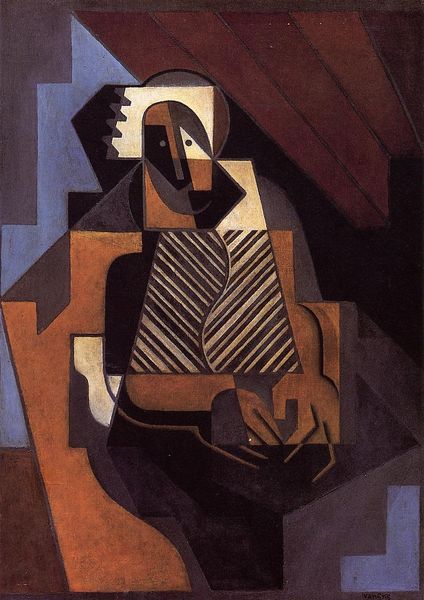
Theatrical costume design for the play by William Shakespeare's "Romeo and Juliet " 1921
0:00
0:00
painting, gouache, textile
#
art-deco
#
cubism
#
narrative-art
#
painting
#
gouache
#
textile
#
constructivism
#
painted
#
text
#
costume
#
history-painting
#
portrait art
Copyright: Public domain
Curator: Let’s take a look at this striking theatrical costume design for William Shakespeare’s “Romeo and Juliet” crafted by Aleksandra Ekster in 1921. Editor: Immediately, the dynamism strikes me. There's this fantastic interplay of angled forms and shaded browns. It's as though we’re seeing the figure in fractured motion. Curator: Indeed, Ekster’s work masterfully blends Cubist and Constructivist aesthetics. These movements sought to revolutionize artistic representation, mirroring the social and political upheavals of the time. This design reflects the avant-garde’s exploration of new forms of expression and social ideals. Think about how Shakespeare's exploration of old familial conflict informed class tension of early 20th century Russian society. Editor: Formally, I am struck by the fragmentation of the figure into geometric shapes. Look how the planes create an almost sculptural presence. And the palette – restrained to these earthy browns and creams – unifies the composition, allowing the eye to focus on the dynamism of the shapes. How does that all add to the drama on stage? Curator: The severe geometry and stark colors probably made the figure into an abstract expression of warring sides; I find the rendering and palette choices especially poignant considering the backdrop of political tension. Editor: You’re right, it feels as though the very form embodies a tension. Curator: The choice to incorporate a simple script reflects broader discussions in the Russian avant-garde concerning accessible language and a theatre of social function. In particular, her approach to "Romeo and Juliet" brings into focus a class dynamic in conflict within this classical play. Editor: From a structural standpoint, it's amazing how she captured the essence of movement within the limited palette and hard-edged shapes. Ekster seems less focused on romantic interpretation here. Instead the structure communicates. It is almost architectural! Curator: Absolutely. The interplay between form, color, and socio-political context here reveals a multi-layered narrative within Ekster’s vision of Romeo and Juliet. Editor: Well, now when I look at it, it almost dances off the surface.
Comments
No comments
Be the first to comment and join the conversation on the ultimate creative platform.
